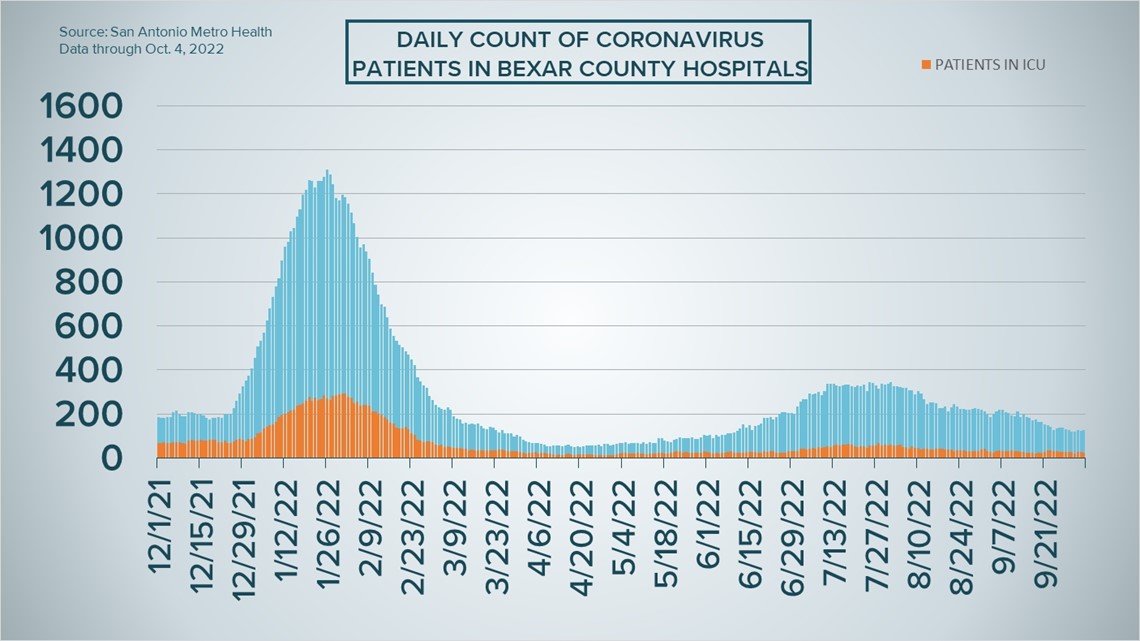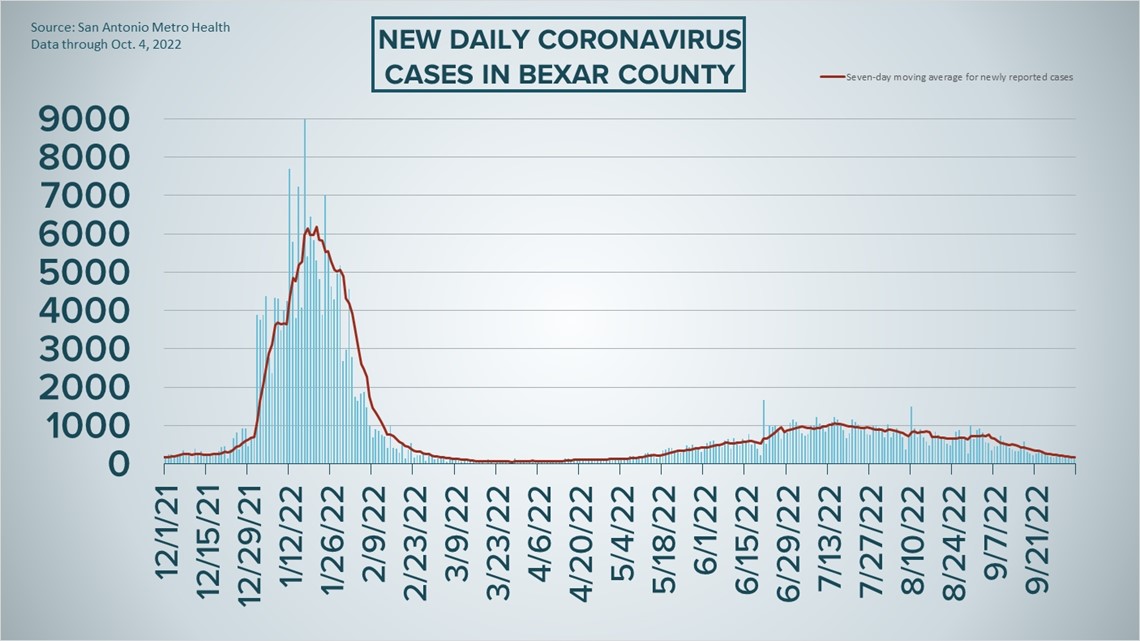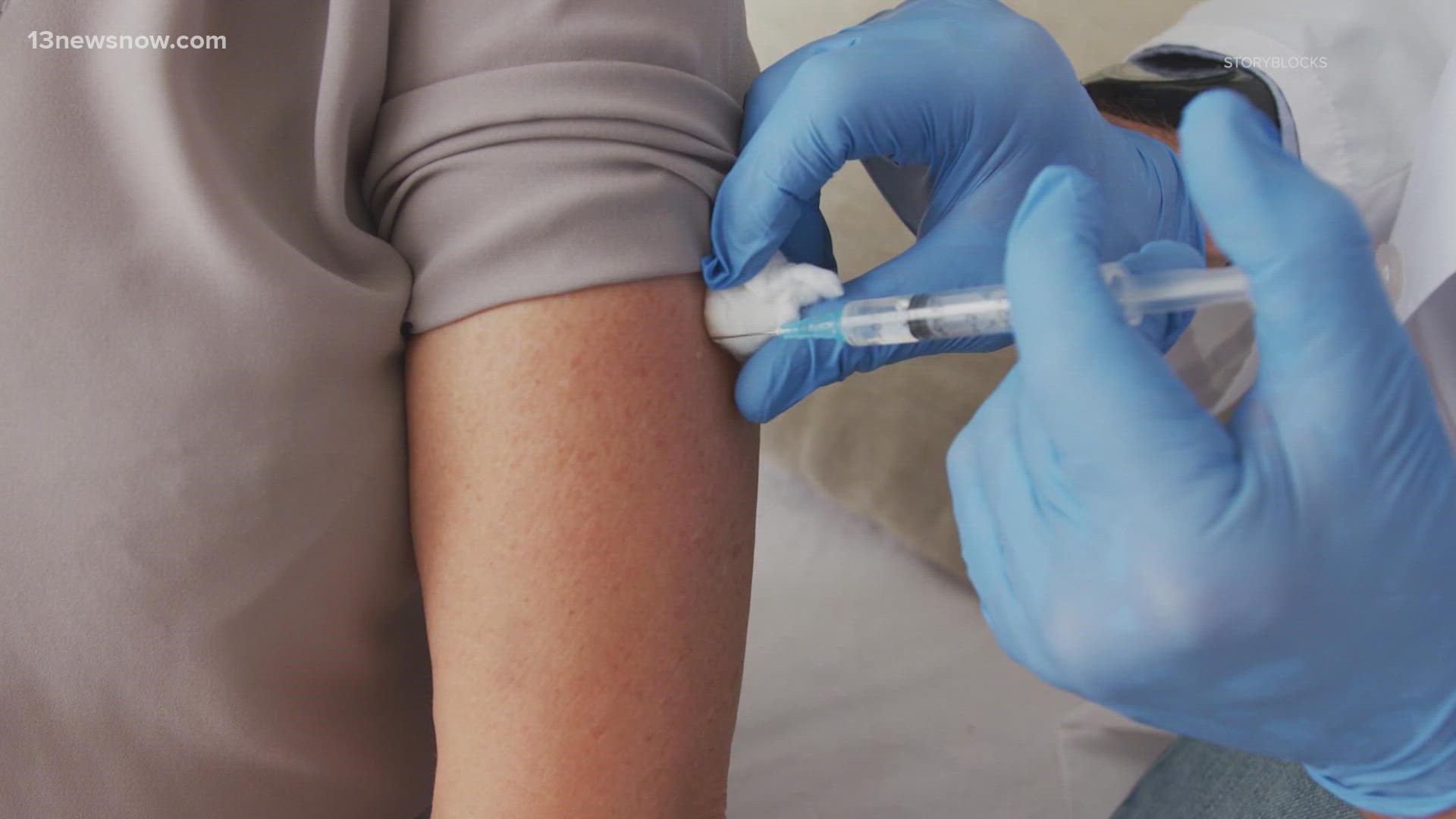SAN ANTONIO — Bexar County continues to be in the lowest risk threshold for COVID-19 spread after September yielded the fewest number of new cases in the community since May—all positive signs as colder weather arrives and doctors warn of a potential surge in flu cases this winter.
Another 131 coronavirus infections were reported in the San Antonio area on Tuesday, the lowest single-day case count since 131 were also tallied on May 16. Tuesday's count dropped the seven-day case average to 175; that number has now fallen every day for three weeks.
And while the number of local COVID-19-related hospitalizations increased slightly to 127 on Tuesday, the number of patients is still down 40% since the start of last month. Of those 127 patients, 24 were in intensive care and seven were using ventilators to help them breathe.
More than 643,000 COVID-19 cases have been reported in the San Antonio area, while at least 5,414 local residents have died from virus complications.
Meanwhile, Metro Health continues to organize pop-up clinics for no-cost COVID-19 vaccines. The next ones are scheduled for Wednesday, Thursday and Saturday.
How Bexar County is trending




Vaccine progress in Bexar County
The following numbers are provided by San Antonio Metro Health. A full breakdown can be found here.
- 1,478,351 eligible Bexar County residents are fully vaccinated as of Sept. 26, which is about 77.8% of the total population over the age of 4.
- 585,581 eligible Bexar County residents have received a COVID-19 booster shot as of Sept. 26, which is 40.8% percent of the population.
The CDC states that "when a high percentage of the community is immune to a disease (through vaccination and/or prior illness)," that community will have reached herd immunity, "making the spread of this disease from person to person unlikely."
The City of San Antonio breaks down the vaccination rates by zip code on Metro Health's Vaccination Statistics page.
Coronavirus in Texas
The total number of coronavirus cases in the state grew by 1,671 on Monday, according to the Texas Department of State Health Services. That total includes 1,075 new confirmed cases and 596 new probable cases. More details can be found on this page.
Monday's figures bring the total number of Texans diagnosed with COVID-19 to more than 7.87 million.
Meanwhile, two more Texans have died from virus complications, the state reported Monday, raising the statewide death toll to 89,234. The latest daily figures, for Tuesday, weren't yet released by state officials.
Coronavirus symptoms
The symptoms of coronavirus can be similar to the flu or a bad cold. Symptoms include fever or chills, cough, shortness of breath or difficulty breathing, fatigue, muscle or body aches, headache, new loss of taste or smell sore throat, congestion or runny nose, nausea or vomiting, and diarrhea, according to the Centers for Disease Control.
Most healthy people will have mild symptoms. A study of more than 72,000 patients by the Centers for Disease Control in China showed 80 percent of the cases there were mild.
But infections can cause pneumonia, severe acute respiratory syndrome, kidney failure, and even death, according to the World Health Organization. Older people with underlying health conditions are most at risk.
Experts determined there was consistent evidence these conditions increase a person's risk, regardless of age:
- Chronic kidney disease
- COPD (chronic obstructive pulmonary disease)
- Obesity (BMI of 30 or higher)
- Immunocompromised state (weakened immune system) from solid organ transplant
- Serious heart conditions, such as heart failure, coronary artery disease, or cardiomyopathies
- Sickle cell disease
- Type 2 diabetes
- The CDC believes symptoms may appear anywhere from two to 14 days after being exposed.
Human coronaviruses are usually spread...
- Between people who are in close contact with one another (within about 6 feet).
- Through respiratory droplets produced when an infected person coughs, sneezes or talks. These droplets can land in the mouths or noses of people who are nearby or possibly be inhaled into the lungs.
- Some recent studies have suggested that COVID-19 may be spread by people who are not showing symptoms.
Help stop the spread of coronavirus
- Stay home when you are sick.
- Eat and sleep separately from your family members
- Use different utensils and dishes
- Cover your cough or sneeze with your arm, not your hand.
- If you use a tissue, throw it in the trash.
Find a testing location
City officials recommend getting a COVID-19 test if you experience fever or chills, cough, shortness of breath or difficulty breathing, fatigue, muscle or body aches, headache, new loss of taste or smell, sore throat, congestion or runny nose, nausea or vomiting, or diarrhea.
Here's a Testing Sites Locator to help you find the testing location closest to you in San Antonio.
Latest Coronavirus Headlines
- Why do scientists think the COVID pandemic may have changed our personalities?
- Bryan ISD seeking more preschoolers amid COVID concerns
- Bexar County COVID risk level drops to low for first time since June
- Are CC business' COVID relief grants legitimate? Better Business Bureau weighs in
- Pfizer seeks to expand omicron booster to 5- to 11-year-olds
- 4.4M Americans roll up sleeves for omicron-targeted boosters
- Biden in 60 Minutes interview: COVID-19 pandemic is 'over'

